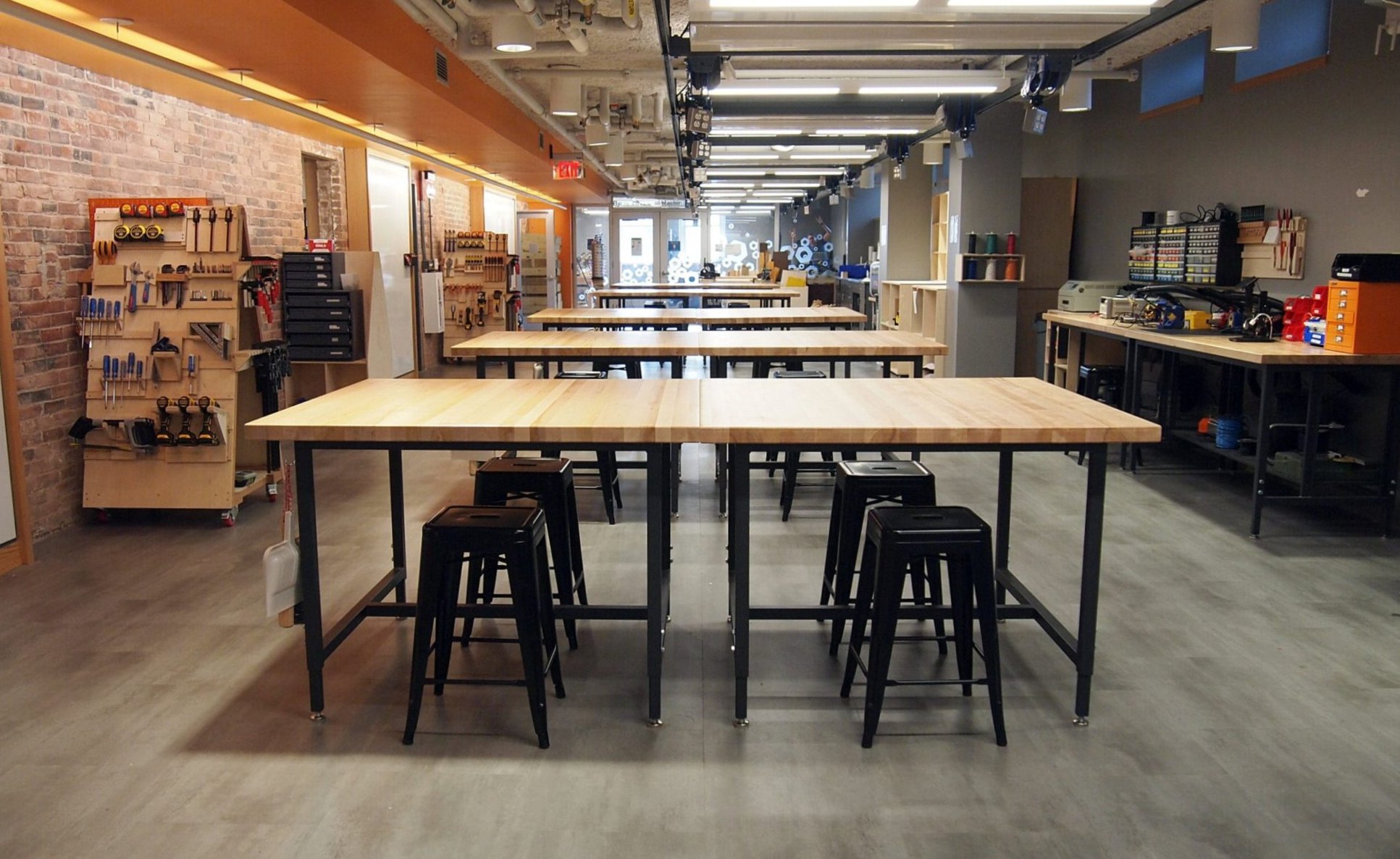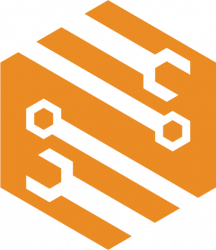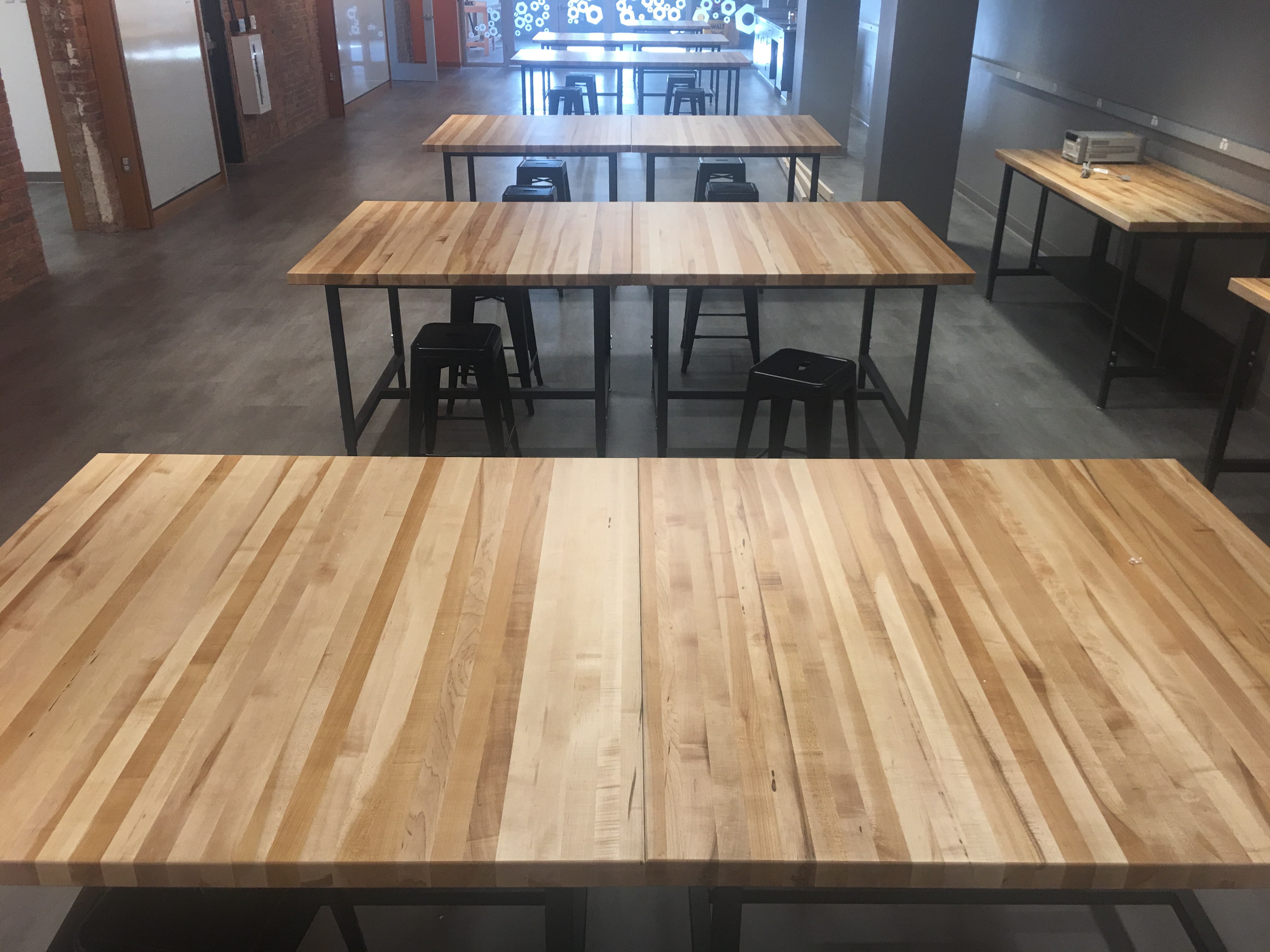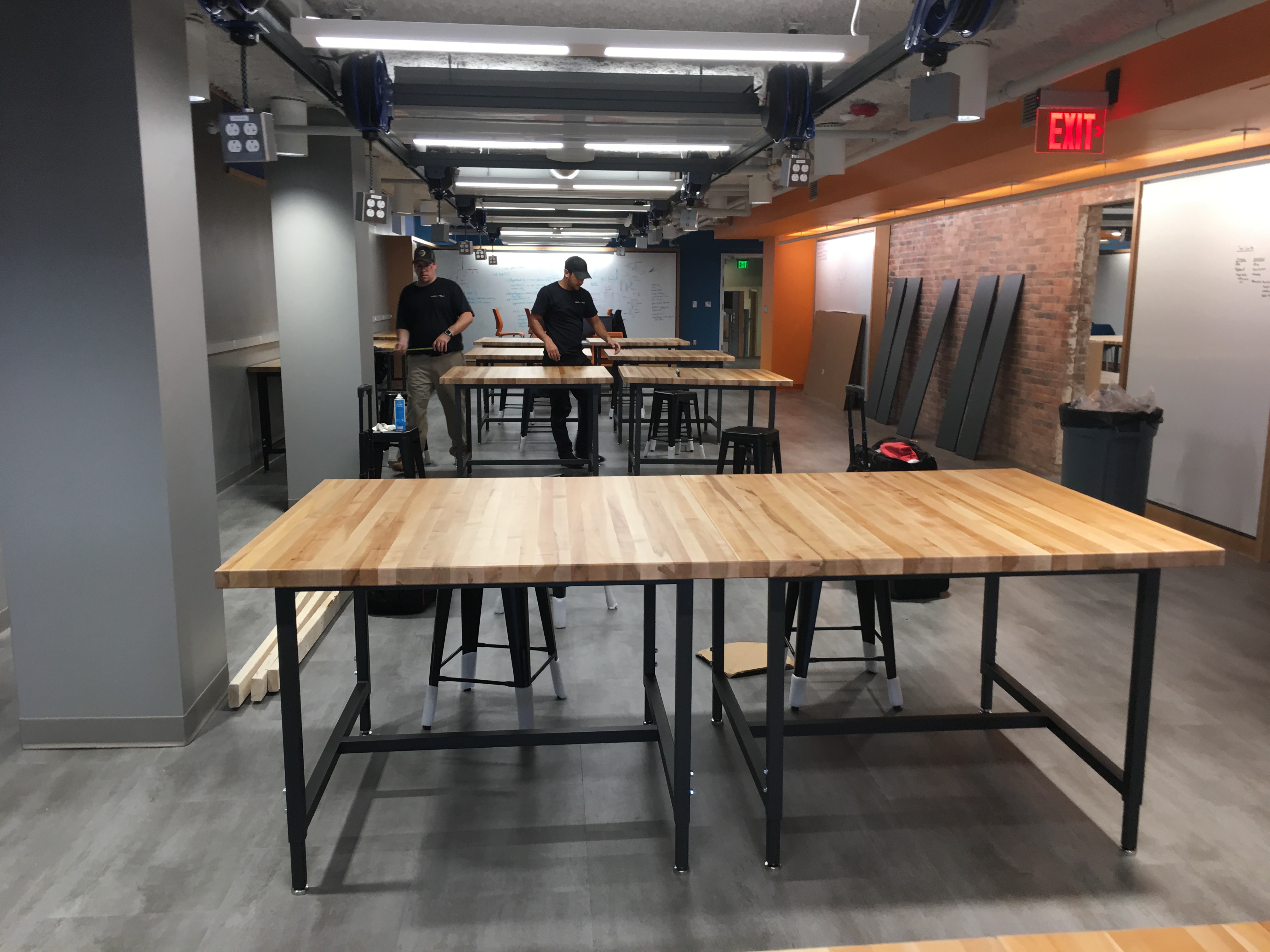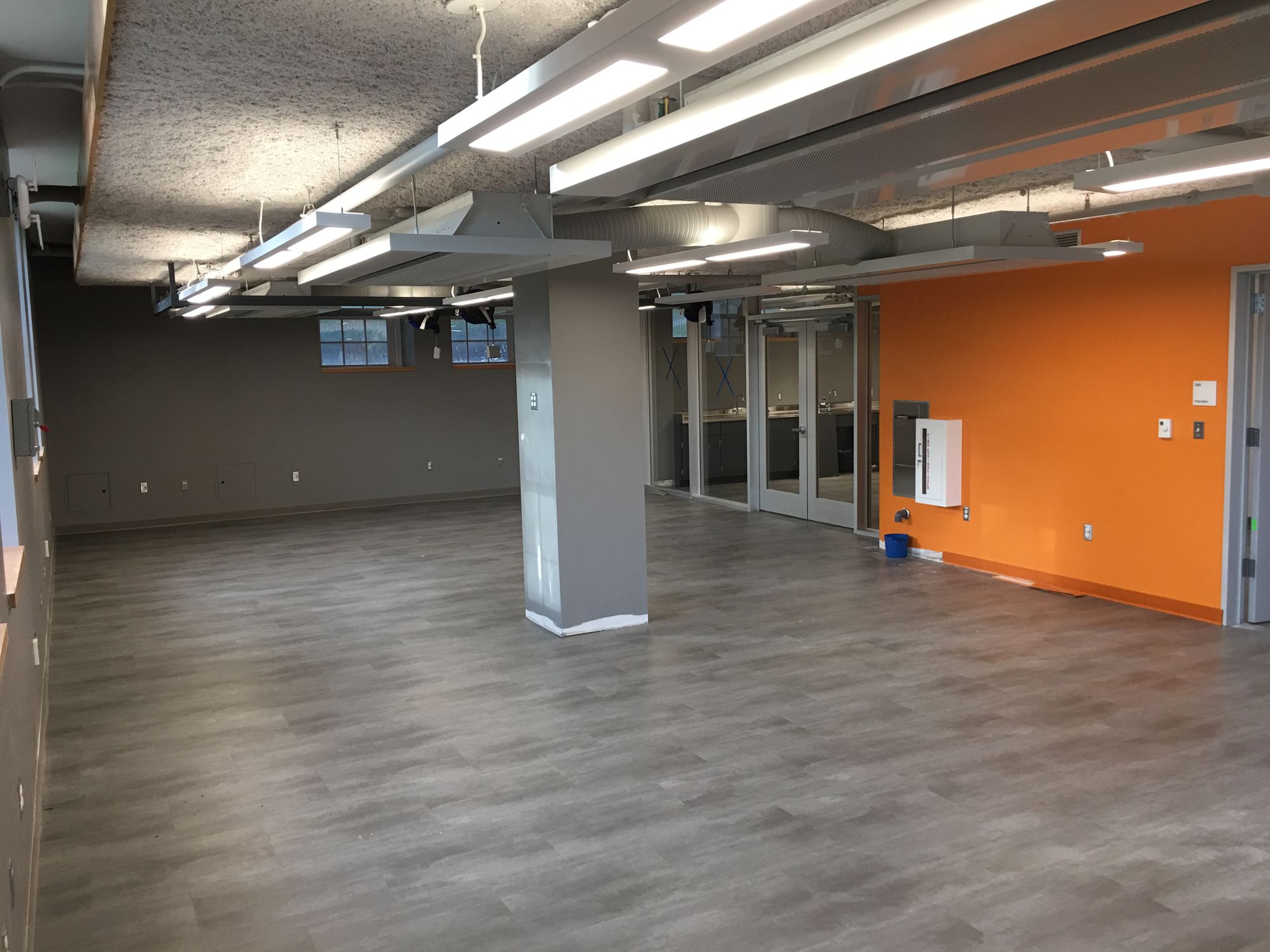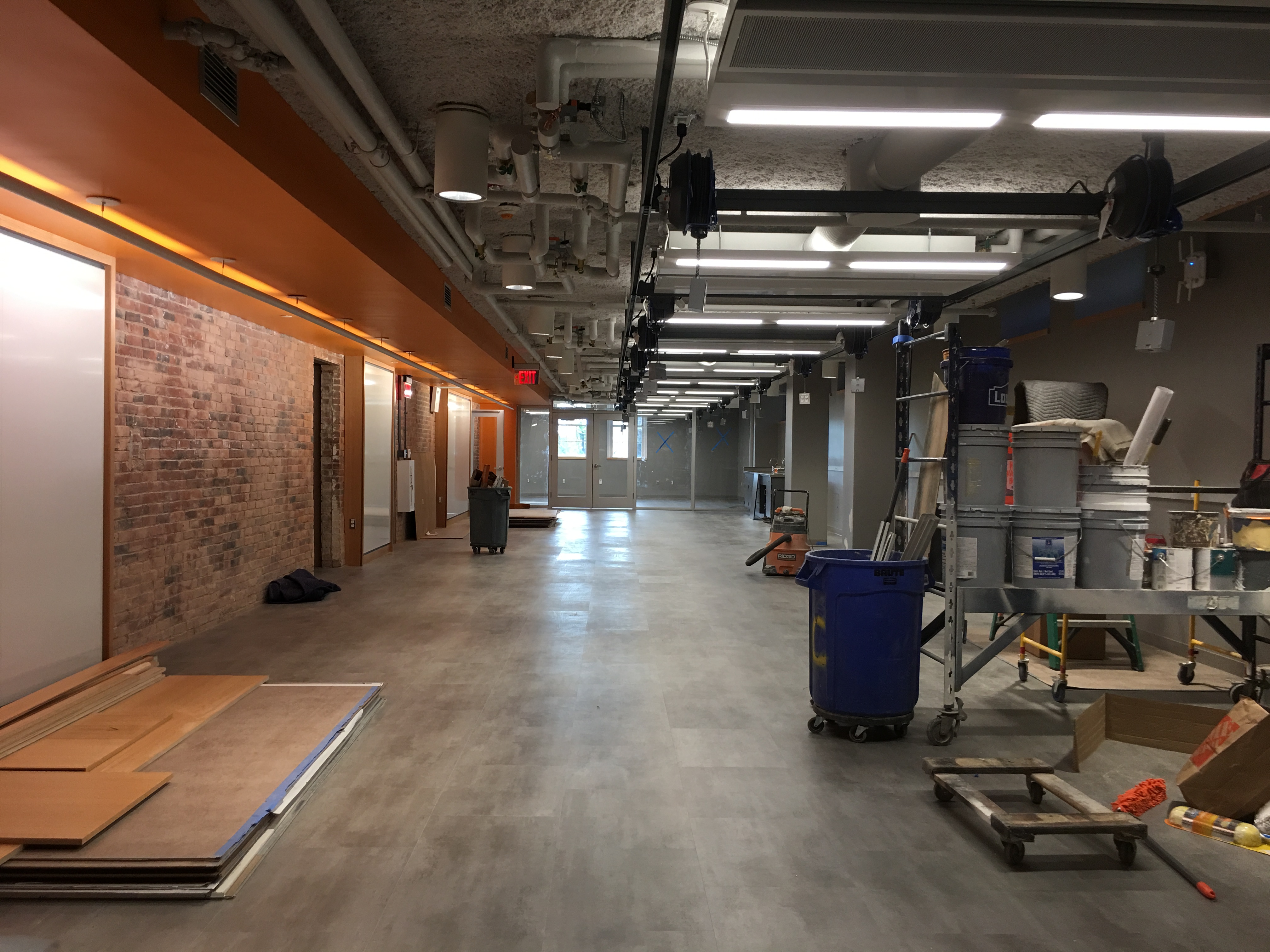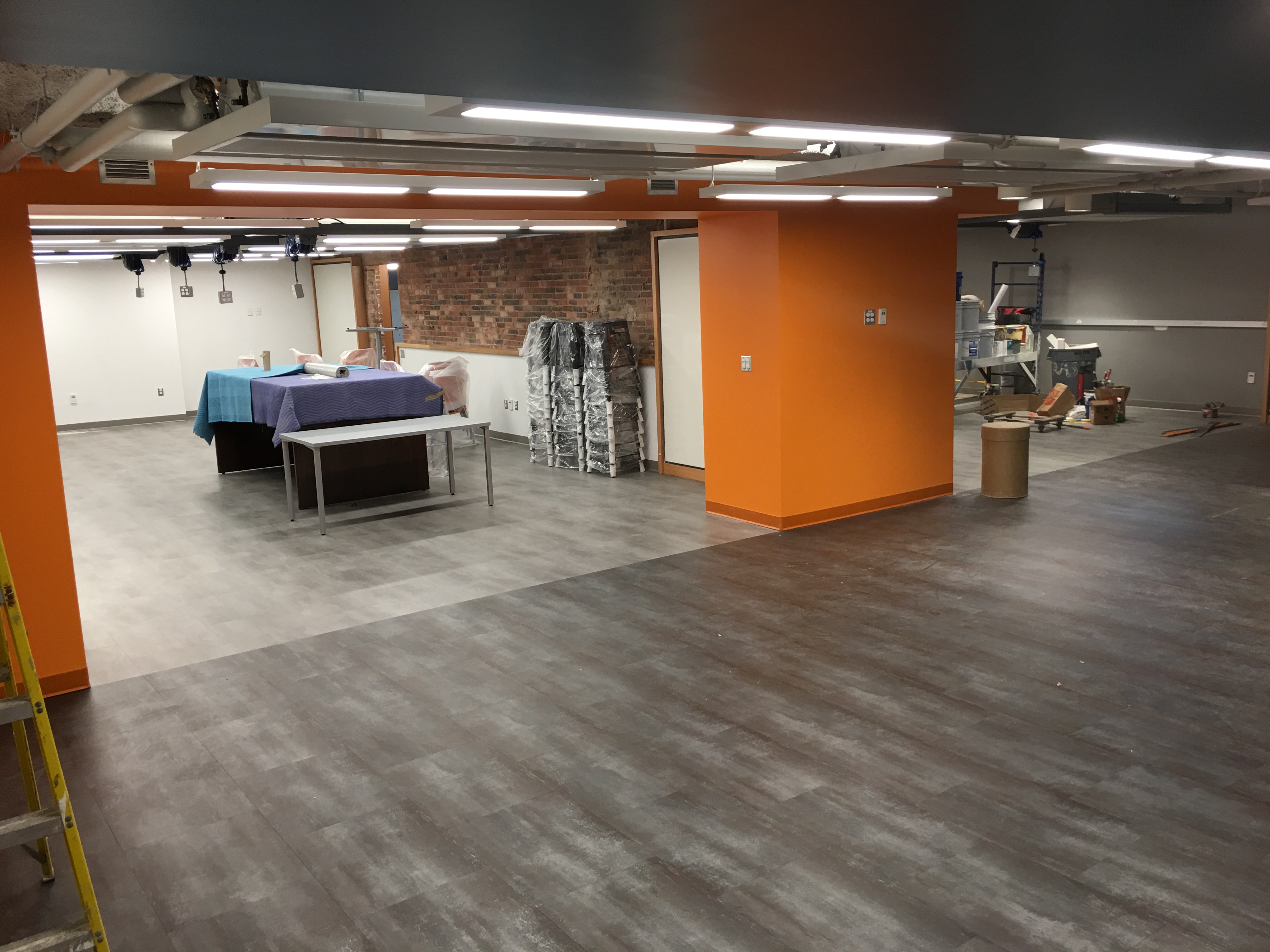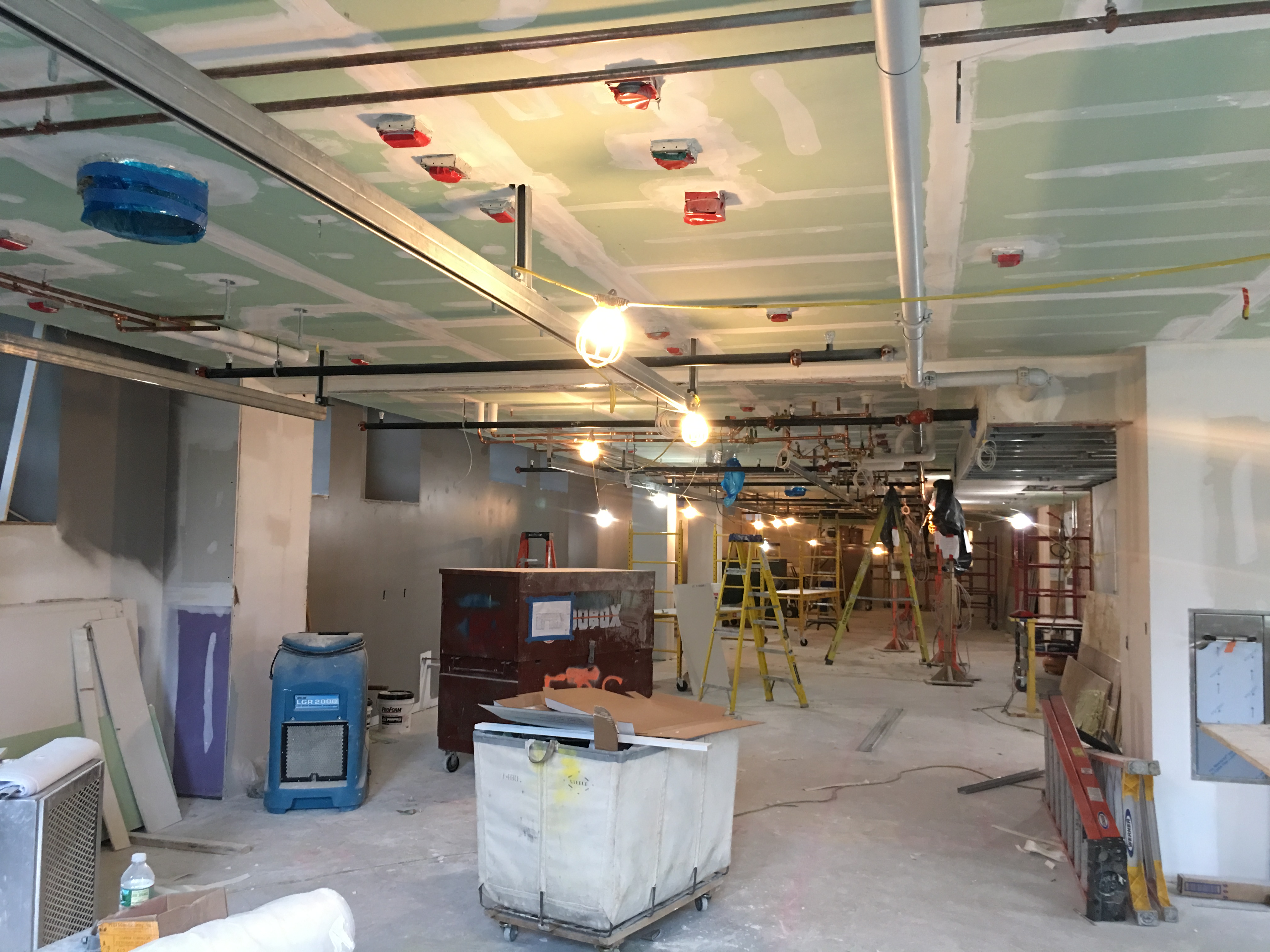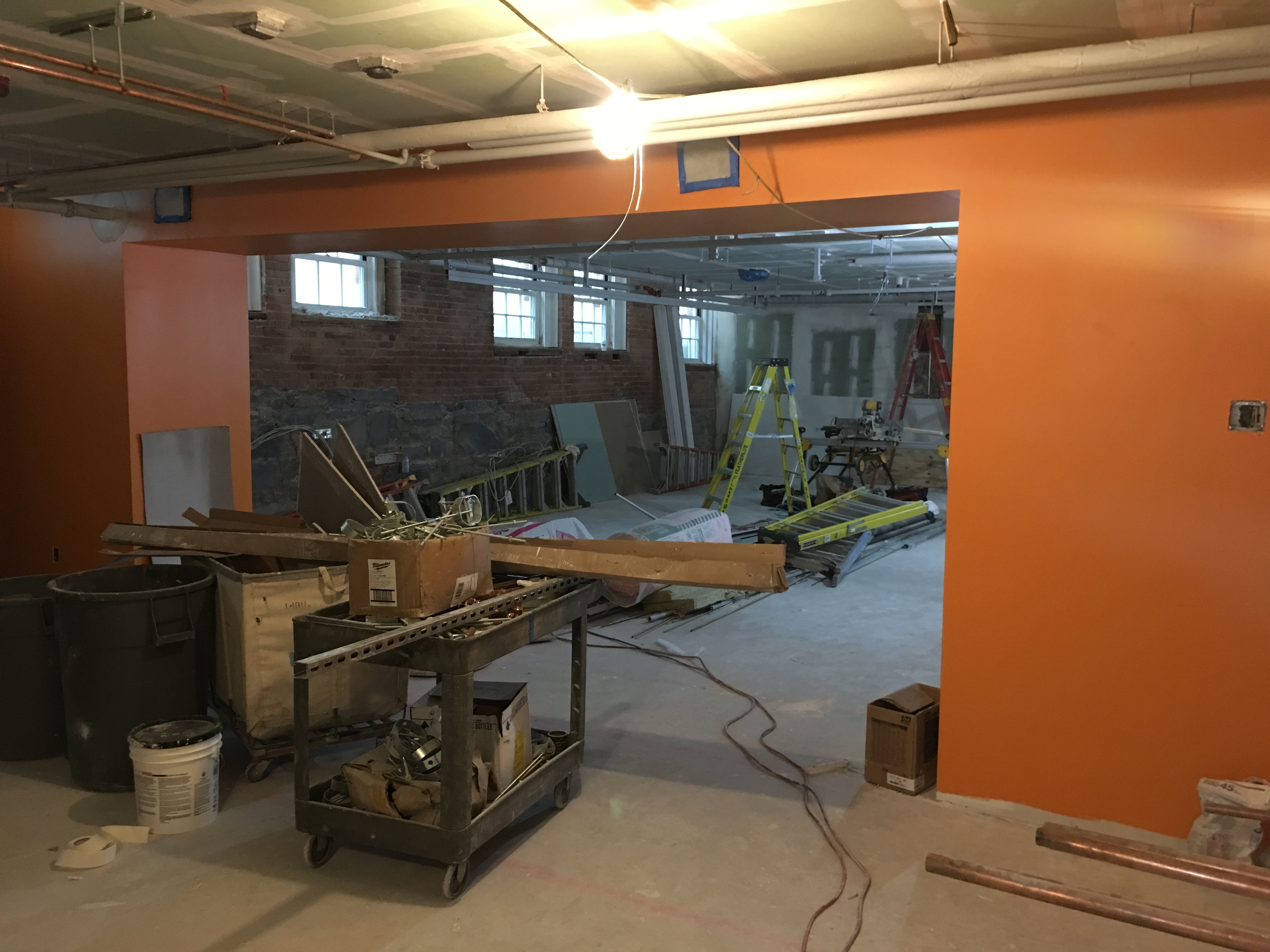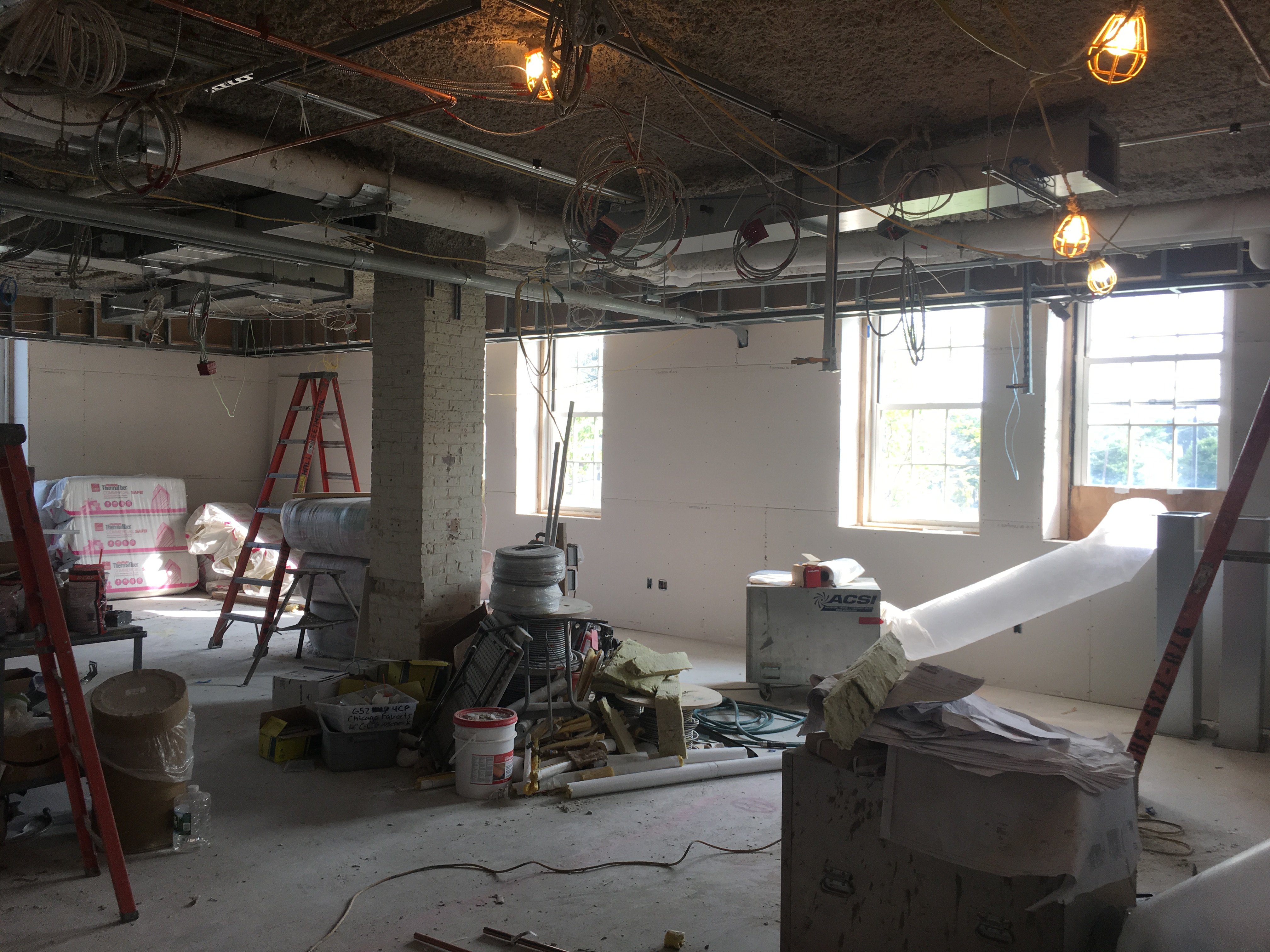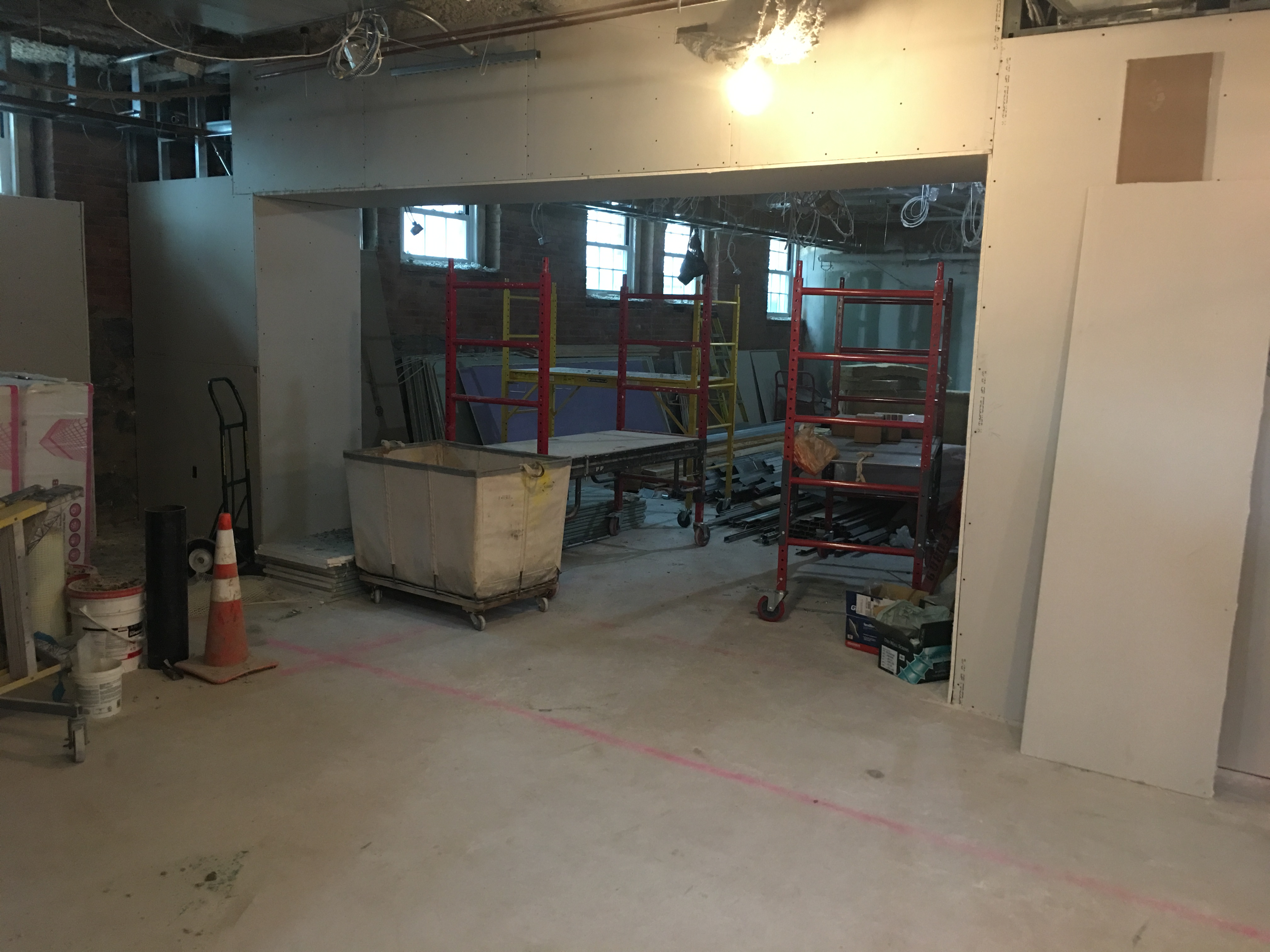The first semester of Nolop operation was a massive success. I want to note a few hard numbers for posterity, plus record some thoughts about how the place has been thriving and what we can improve next year.
For the last 6-8 weeks of the semester, Nolop was packed with people building cool stuff every afternoon and evening. The peak was likely the afternoon of Monday, April 29, when I counted 52 students working in the space, plus 3 or 4 staff members assisting them. All chairs were taken, and people were overflowing on the floor, many working on robots in small teams. The bulk of the students in that peak came from ES2 (Computing in Engineering), which had a project due the next day, and ME1, due two days later, but we also had other students in the mix.
Off that peak, I would often count students in the space when I went home for the day around 5 PM; values of 25-30 students were typical. On Fridays, that would be dominated by the Robotics Club and other people working on extracurricular projects; on other weekdays, curricular work dominated.
21 different courses from 11 departments used Nolop over the course of the semester. The heaviest curricular usage came from the Mechanical Engineering department, followed by the SMFA sculpture classes.
| Course | Instructor | |
|---|---|---|
| AST 16 | Astrophysics Laboratory | Danilo Marchesini |
| BME 66 | Engineering Design Process | Janet Krevolin |
| CEE 42 | Introduction to Geotechnical Engineering | Chris Swan |
| COMP 11 | Introduction to Computer Science | Mark Sheldon and Samuel Guyer |
| EE 147 | Analog and Mixed Signal IC Design | Sameer Sonkusale |
| EN 1 | Music and Art of Engineering | Jeff Hopwood |
| ENP 165 | Industrial Design | Eric Bogner |
| ES 2 | Introduction to Computation in Engineering | Ethan Danahy |
| ES 8 | Fluid Mechanics | Doug Matson |
| ES 9 | Applied Mechanics | Luis Dorfman |
| ME 1 | Mechanical Design and Fabrication | Luisa Chiesa and Gary Leisk |
| ME 84 | Introduction to Robotics | Chris Rogers |
| ME 93 | Electronics for Mechanical Engineers | Brandon Stafford |
| ME 94 | Undergraduate Research | Kristen Wendell |
| ME 149 | Design of Physical Solutions for People in Need | Gary Leisk |
| ME 149 | Design for Sustainability | Deborah Sunter |
| ME 171 | Engineering Education Design | Kristen Wendell |
| MUS 63 | Electronics Musical Instrument Design | Paul Lehrman |
| OTS 105 | Assistive Technology | Jennifer Buxton |
| SCP 103 | Digital Fabrication Lab | Floor Van De Velde |
| SCP 110 | Sonic Forms | Floor Van De Velde |
We also had some usage by graduate students doing research in labs in Biology and Environmental Engineering. Typically, they were building elements of some scientific apparatus that they needed to perform a certain experiment.
Student club usage
After curricular usage, the next greatest utilization came from student clubs. The Tufts Robotics club, Design for Social Good, and the Tufts Make Galton board subgroup all held their weekly meetings in Nolop on Friday afternoons; the Tufts chapter of Students for the Exploration and Development of Space met in Nolop on Sundays. These four groups (especially the Robotics Club and SEDS) are the most active student engineering groups on campus.
Additionally, the Tufts Steel Bridge Team did their test assembly of their bridge in Nolop; they also stored the bridge materials there before the competition. Also, SOLES, the Society of Latinx Engineers and Scientists, held a product design workshop with Google engineers in the space.
Materials usage
In March, we started a small student store inside of Nolop. The Nolop Store buys engineering materials at bulk prices and resells them to students at those same low prices, but in smaller quantity. The goal of the store is to take away the hurdles that students would have to jump to build a project. For most students, ordering huge sheets of plastic or plywood from industrial suppliers, plus paying shipping or driving somewhere to pick it up, is not a plausible alternative– they don’t have cars or the resources to afford large purchases. We found that by bulk ordering in moderately large quantities from industrial suppliers (say, ten 4 x 8 sheets of acrylic), we could undercut the cheapest prices otherwise available to students by a factor of 4, while eliminating the hassle and most of the cost of shipping at the same time.
Over the course of around 6 weeks in March and April, we sold $771.75 of mostly acrylic and plywood for lasercutting, as well as some electronic parts and motors for building electromechanical systems.
Over the course of the semester, we used 37 kg of 3D printer filament. We started with one Lulzbot Taz 6 3D printer. When that proved popular, we ordered unassembled kits of Prusa i3 MK3 printers, which student workers assembled, often late into the night. (In the classic words of Jeremy Kanovsky, “Printer finished @ 3:01 AM. Regrets? I have none. Sleep? I have none.”)
We don’t have a good measurement of how much the laser cutter was used, but it rivals the 3D printer as the most popular tool. Roughly speaking, I’d estimate an average of 30 laser cut projects per day over the last 60 days of the semester, so around 1800 jobs run. Late in the semester, I enabled print queue logging on the laser cutter PC, so next semester, we should have a better measurement.
Workshops
We ran two workshops during the semester: one focused on robotics, which drew 25 people, and one focused on laser-cut earrings, which drew less than 10 people. Next semester, we hope to substantially increase the frequency and scope of workshops.
Safety record: excellent
We had no significant safety incidents in the makerspace this semester. We dispensed a total of roughly 15 bandaids over the course of the semester. The most common cause was cuts from sharp edges of acrylic or plywood. The most severe was a fan blade that came loose and hit someone in the forehead. The result was a small cut, but notably the activity was not one enabled by the tools in Nolop; the student would have been playing with the fan motor in his dorm room anyway.
I trained 86 people to use some or all of the tools in the red zone; there were no known incidents of unauthorized tool usage.
Equipment maintenance
We had three significant equipment failures:
- Laser cutter head rollers flat-spotted, $45 and 2 days to replace
- 3D printer head melted, $75 and 1 week to replace
- CNC router brushes worn down, $10 and 3 days to replace
Overall, machine maintenance was a small fraction of the total effort put in by the Nolop staff.
Improvements for 2019-2020
There are 5 core elements that Nolop has to hit to successfully support engineering fabrication at Tufts. For each category, I’ve identified ways that we can improve our performance.
| Core element | Improvements for 2019-2020 |
|---|---|
| Access to workspace | Expanded evening and weekend hours |
| Tools for fabrication | Bandsaw, possibly a waterjet or advanced 3D printer |
| Materials conveniently and cheaply available | More plywood, dimensional lumber available in Nolop Store |
| Storage for projects in progress | More cubbies, racks, cabinets |
| Skill building | Workshops |
Additionally, I hope to draw in the remaining student clubs that build stuff (the Biomechanics Club, the Society of Women Engineers, and the Tufts chapter of the ASME). (The Tufts Electric Racing Team has used Nolop a bit for electronics, but they’re a good fit in Bray because they need a garage door for their racecar.)
On to 2020!
Brandon Stafford
Manager, Nolop Makerspace
